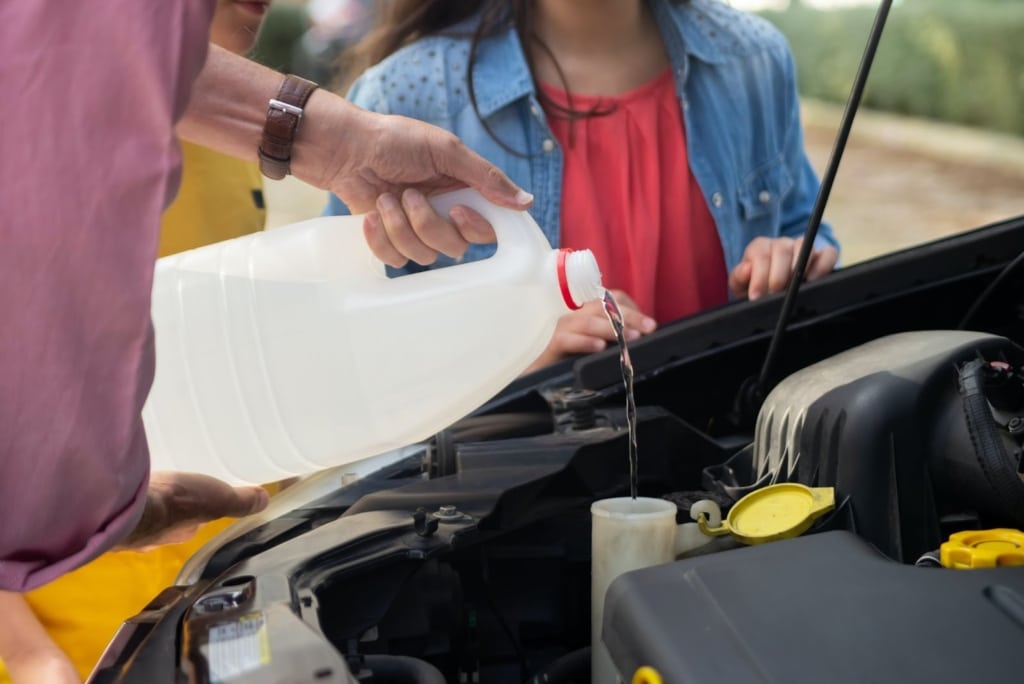
Being a new driver is exciting. You have a newfound freedom and an open road to explore. However, being a new driver also comes with a new set of responsibilities.
Aside from practicing safe driving habits, it’s also important to learn another habit: car maintenance. Understanding the basics of car maintenance is important not only for your safety but for the longevity and performance of your vehicle. Additionally, ongoing maintenance and care can help you save money in the long run.
In this guide, we’ll look at some essential car maintenance tips, including checklists, mistakes to avoid, DIY tasks you can tackle on your own, and more.
The Importance of Car Maintenance for New Drivers
Getting into good car maintenance habits is important for new drivers. Not only does it improve safety, but it can also impact the longevity of your vehicle. Regular and proactive maintenance helps avoid breakdowns, improves fuel efficiency, and helps you avoid expensive repairs caused by improper vehicle care. Let’s examine some key areas to focus on for your vehicle maintenance.
Why Regular Oil Changes are Critical for Your Car

According to Kelley Blue Book, a respected automotive research company, regular oil changes are essential for maintaining engine health and prolonging the lifespan of your vehicle. Engine oil lubricates the different parts of an engine, which helps cut down on friction and avoid excessive wear and tear. When old oil is left in an engine too long, it becomes contaminated with dirt and debris, which can lead to engine issues and costly repairs.
Tire Maintenance
Maintaining healthy tires is another important aspect of car maintenance. New drivers should get in the habit of regularly checking their tire pressure, rotating their tires every 5,000 to 8,000 miles, and ensuring they’re all correctly balanced and aligned. When tires are worn down unevenly, your vehicle can start pulling to one side, affecting fuel efficiency. Maintaining your tires regularly, either every few thousand miles or every few months, helps you avoid these issues and enhance traction and handling.
Understanding Basic Car Fluids and Their Maintenance
New drivers should familiarize themselves with the basic fluids in their cars, where they’re stored, and what they do. These include:
- Engine oil: Lubricates an engine’s parts, reducing friction, topped up in the engine’s oil reservoir under the hood
- Coolant: Helps regulate the engine’s temperature and prevents it from overheating or freezing, topped up in the coolant reservoir, usually near the radiator
- Break fluid: Transfers force from the brake pedal to the brakes, helping a vehicle slow down or stop, topped up in the brake fluid reservoir, typically near the master cylinder
- Windshield washer fluid: Helps clean the windshield, improving visibility, topped up from the windshield washer fluid reservoir, also usually found near the engine
Regularly monitor and top up these fluids to prevent major mechanical issues and ensure your car continues to run smoothly and safely.
Checking and Replacing Essential Car Parts
New drivers should also get into the habit of checking essential car parts, like spark plugs, brake pads, and air filters. While each part seems small, they all play crucial roles in a car’s performance and safety, so you don’t want to neglect them.
Seasonal Maintenance Checklist
Based on the season, you should be preparing your cars for changing weather conditions. This can include checking the battery, brakes, heating and cooling systems, tires, and more. Before each season, you’ll want to make sure your car is in peak condition.
Budget-Friendly Maintenance
While car maintenance can be expensive, there are budget-friendly ways to take care of your vehicle. There are many DIY maintenance tasks you can do on your own instead of bringing your car to a garage, like changing air filters or replacing windshield wipers. It’s a good idea to get used to certain car repair and maintenance tasks so that if something suddenly breaks, you know whether you can fix it on your own or if you need to bring it to get serviced.
The Ultimate Car Maintenance Checklist
Familiarize yourself with the ultimate car maintenance checklist below to understand what to look out for when caring for your car:
- Oil change
- Fluid levels
- Tire pressure and tread
- Battery performance
- Brakes
- Lights (headlights, turn signals, brake lights, etc.)
- Air filter
- Belts and hoses
- Cooling system
- Exhaust system
- Steering and suspension
- Wipers and windshield washer fluid
- Emergency and/or seasonal kit
DIY Car Maintenance Tips
Taking care of your car doesn’t always need to be expensive. Before heading to the mechanic, check if there’s a way for you to maintain your car on your own. You can perform a lot of maintenance tasks yourself with some basic tools and supplies that you can find at any auto shop. Here’s a look at some essential DIY car maintenance tips.
Changing Oil and Oil Filter
To change your oil and swapping to a new oil filter, you’ll need certain supplies like new oil, a funnel, a new filter, a drain pan, and an oil filter wrench. To start, locate the oil drain plug under your car and remove the plug to drain the old oil into the drain pan. Then, you can replace the oil filter and add new oil using a funnel, checking the dipstick to ensure it’s at the right level.
Checking and Topping Up Fluids

You can top up various fluids on your own, like engine oil, coolant, and windshield washer fluid. Simply locate the correct reservoirs and ensure you’re using the right fluid in each one. Using the wrong fluid can cause damage to your engine. Top up each fluid as needed, ideally with a funnel to avoid spilling.
Checking and Replacing Air Filters
Your air filter is usually in a plastic casing near the car’s engine. First, inspect the air filter for dirt and debris. If it’s clean, you can put it back, but if it’s dirty, you can replace it with a new one you buy from an auto parts store.
Inspecting and Replacing Wiper Blades
To remove old windshield wipers, lift the arms away from the windshield. There should be a tab or button to release the blades and slide them off. Once removed, you can attach the new ones, ensuring they’re securely in place, and then put the wipers back down.
Common Car Maintenance Mistakes New Drivers Should Avoid
While doing your DIY maintenance can help keep car costs down, doing more complex repairs without proper knowledge can make a bad situation worse. To save money in the long run and ensure your car is safe to drive, make sure you’re avoiding these common car maintenance mistakes:
- Ignoring warning signs like unusual noises, warning lights, or changes in vehicle performance
- Neglecting regular maintenance like oil changes, fluid checks, and other routine checks
- Forgetting to monitor tire pressure, rotating them, or not checking for tread
- Using the wrong fluids in the wrong repositories or the wrong type of oil for your engine
- Not checking the owner’s manual before doing DIY repairs to verify manufacturer maintenance recommendations
Seasonal Maintenance Tips
Checking your car seasonally is important to ensure your vehicle is ready for different weather and road conditions. In the winter, low temperatures can affect your car’s engine and batteries, and in the summer, without proper cooling, your car can overheat. Here’s what to look for in both winter and summer.
Winter Maintenance Essentials
- Check and replace tires with winter tires
- Test the battery to ensure it’s fully charged
- Check and top up all fluids, especially coolant
- Add an emergency kit to your car
- Add items like road salt, a shovel, and ice scrapers to your car
Summer Car Care Tips
- Inspect and rotate tires or remove winter tires and swap them for all seasons
- Check coolant levels and top up if necessary
- Check windshield wipers to see if they need to be changed after winter
- Inspect and replace air filters if necessary
- Check your battery for wear and tear
- Check your air conditioning system
Driver’s Education with Driven2Drive
As part of the driver’s education you receive through Driven2Drive, which includes driving lessons, road test preparation, license testing, and more, we’ll also help prepare you to take care of a vehicle. To get our students ready to become safe and responsible drivers, we make it a priority to also include basic vehicle maintenance education.
In our courses, we’ll teach you how to properly maintain a car, including where to locate the different fluid reservoirs, what different lights on a dashboard mean and what to do about them, tips and best practices for doing DIY maintenance on your car, and more. At Driven2Drive, we believe in a holistic approach to learning how to drive, which includes not only road practice and driving theory, but valuable information on car maintenance for new drivers that empowers them to practice good maintenance habits.
Book a driving lessons package today to learn the best car maintenance practices.
FAQs
What are the Basic Car Maintenance Tasks Every Driver Should Know?
Basic car maintenance tasks include checking and topping up fluids (such as oil, coolant, brake fluid, and windshield washer fluid), inspecting and maintaining tire pressure, checking and replacing air filters, monitoring the condition of brakes and lights, and regularly cleaning both the interior and exterior of the vehicle.
How Often Should I Change My Car’s Oil?
The frequency of oil changes depends on different factors, like the type of oil used, driving conditions, and manufacturer recommendations. Typically, it’s recommended to change the oil every 5,000 to 7,500 miles or every six months to ensure optimal engine performance and longevity.
Why is Tire Maintenance Important, and How Often Should I Rotate My Tires?
Tire maintenance is important for safety, fuel efficiency, and prolonging tire lifespan. Tires should be rotated every 5,000 to 8,000 miles, or as recommended by the vehicle manufacturer, to ensure even wear and maximize traction and handling.

Ronit Tehrani is the Founder and Co-Owner of Driven2Drive, a premier driving and license testing center in Philadelphia. Since 2013, she has been dedicated to providing safe driving education and skills for lifelong success. Under her leadership, Driven2Drive became Pennsylvania’s first privately owned PennDOT-certified testing center, now with six locations.
